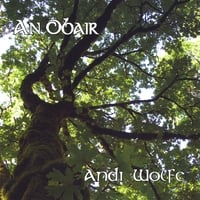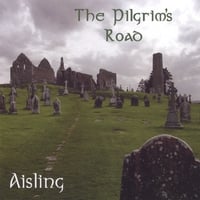 The second day of our trek dawned with clear skies. Our routine for each morning was a wake-up call in the form of tea being brought to our tent at 6 a.m, followed 20 minutes later with two bowls of hot water for washing, and then breakfast at 7 a.m. We were supposed to get on the trail at 8 a.m., but that never seemed to work out the way it was supposed to. We were lucky to be moving by 8:30 a.m. I'm not sure why it took us so long to get organized each morning other than it was comfortable to be inside a tea house.
The second day of our trek dawned with clear skies. Our routine for each morning was a wake-up call in the form of tea being brought to our tent at 6 a.m, followed 20 minutes later with two bowls of hot water for washing, and then breakfast at 7 a.m. We were supposed to get on the trail at 8 a.m., but that never seemed to work out the way it was supposed to. We were lucky to be moving by 8:30 a.m. I'm not sure why it took us so long to get organized each morning other than it was comfortable to be inside a tea house.This is one of the yaks that we had as part of our support staff. We had nine yaks and a herder to take care of the heavy gear. Porters carried our duffels and the kitchen staff moved all the pots and pans and gear for cooking up the trail.

Aside from the yak dung bombs left all over the trail and the yards where we camped, I thoroughly enjoyed having the yaks along. The sound of their bells will always characterize Nepal for me.
Yak herders are constantly vocalizing or whistling at their charges. Occasionally a stubborn yak has to be moved through the encouragement of a pebble or two, but I didn't see that happen very often. Sometimes the yaks run away from the herder when it's time for loading and it was always entertaining to watch the struggle of wills between human and yak.
The other good thing about yaks on the trail is that when you were stuck behind a yak train, your pace was much more relaxed. To pass yaks on the trail you have to run ahead where there is space. At high elevation, this is a real chore!
Oh yeah, just to set the record straight, there is no such thing as yak butter tea. The Sherpas told us that yaks are male and you can't milk a yak. Naks are the females of the breed, so you eat nak cheese and drink nak butter tea. That seems a bit literal to me and perhaps they were having fun with us, but I'll stick with nak cheese. . .

All through the lower elevations we encountered groups of uniformed kids on their way to school in the mornings. Sir Edmund Hillary built a system of schools throughout the Sherpa settlements, and it was so heartwarming to see his legacy in action.

The biome of the lower elevation - 9,000 to 11,000 feet or so - is dominated by pine forest. The earthy smell of the trail combined with the scent of pines was so utterly refreshing that I'll always be drawn back to this landscape whenever I get a whiff of pine.
The shade of these trees was very welcome on the trail as well. The sun was hot even though the air temperatures were refreshingly cool.

A special treat for me was spotting this jack-in-the pulpit plant along the trail. I was the only one of our group to have seen this, but I do have a different search engine than most of my fellow trekkers. Botanists are always looking around for interesting plants and this one was certainly a highlight for me.

As we climbed higher in elevation, the scenery became much more interesting. We followed a branch of the Khumbu river, Dudh Koshi, during this part of the trek. Eventually we would be on the main branch and then at the source, the Khumbu glacier over the next couple of weeks.
This view shows Thamserku, a mountain we were in sight of most of the day until we headed up the Namche Bazar hill.

The trail crosses the river numerous times and we had the fun of traversing some interesting suspension bridges. Some of them were pretty high over the river. The wind is usually pretty strong and the bridges are in constant motion from other trekkers and yaks. Walking down toward the middle is pretty easy, but going uphill on the other side can be a bit challenging with all the motion going on.

The villages in this region are built along the trail. They're very picturesque and I enjoyed watching the people going about their daily routines. The women were usually gathered around the water supply - mostly doing laundry in the mornings. Kids were playing nearby and stray dogs were scattered around, just laying in the middle of the path or off on a step somewhere. Yaks and ponies were often wandering about as well, as were chickens.
 This is the entry point to Sagarmatha National Park. Mount Everest is called Sagarmatha in Nepal, so this is the entrance to the Everest region.
This is the entry point to Sagarmatha National Park. Mount Everest is called Sagarmatha in Nepal, so this is the entrance to the Everest region.You have to have a permit to enter this area. Our trekking permits were handled by Mountain Tribes, so our rest break here was while Karma, our sidhar was taking care of details.

I posed my Woodcentral hat on Jon Miller's camera. It's going to be fun to watch The Rest of Everest podcast when our trek is featured.

Our lunch stop was about another hour's walk past the park entrance. This is part of our kitchen staff packing up all the gear after lunch. Chirri Sherpa is at the front, Mingmar Sherpa at the left. These guys were up first in the morning, up last in the evening, and they had to hurry ahead of our group after breakfast clean-up to be able to set up for lunch, and then after lunch to get to our evening stop in time for tea. They kept us supplied in boiled water and took care of all of our comfort needs in terms of hot drinks, food, and washing the miscellaneous bottle that was dropped on the trail (or, in my case, in a toilet- that's another story altogether). Thanks, guys! You're the best!

Old and new technologies for trekking.

This lady was observing all of our doings after lunch while she was using her prayer beads. Aside from the down jacket, she's wearing traditional Sherpa clothing.

The last bridge before tackling Namche Bazar hill - a 3,000 foot climb. It's about 100 ft over the river and the wind is pretty strong coming through that gorge.

The khatas and prayer flags give you an idea of the wind on the bridge.
This was my last photo on the trail for the day because Steve became very ill on the climb up Namche hill. He had a bad case of diarrhea, a bit of altitude sickness and then he got too cold. He could take about 10 steps and then had to rest. It was pretty slow going, obviously, and it was after dark when we finally arrived at the base of Namche Bazar.

We had to stop at the first tea house to get Steve warm again before continuing the trek. We probably should have spent the night here, but Steve and I both wanted to make it to our campsite.
While Steve was resting and warming up, I had a chance to get a good look at the tea house.

The family who runs it was very kind. I had some hot tea and some very spicy noodle soup. The place filled up with people who camped out on the benches lining the wall.

After a long rest for Steve in a down sleeping bag, and the delivery of his down coat (one of the Sherpas ran ahead to camp to get it out of his duffel bag), we were able to slowly walk the rest of the way up the hill to our campsite.
Fortunately, we had a two night stay there for acclimatization. Steve felt much better the next day and recovered sufficiently that he was able to do the acclimatization hike we did in the afternoon.
As usual, the rest of the pictures are here: FB album for May 7th











No comments:
Post a Comment